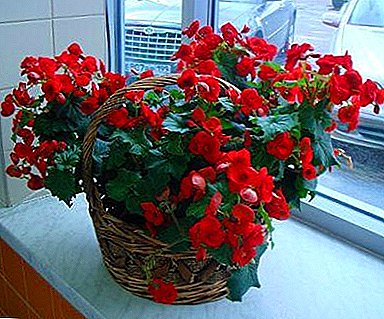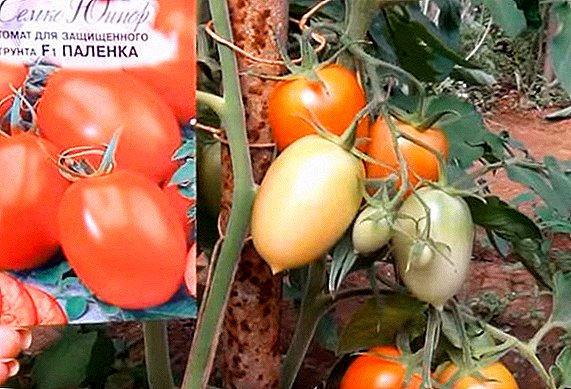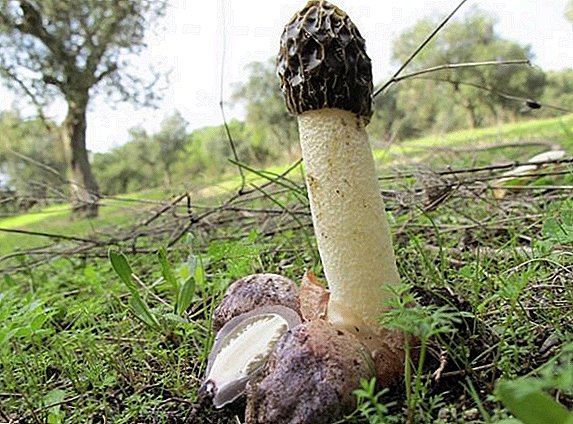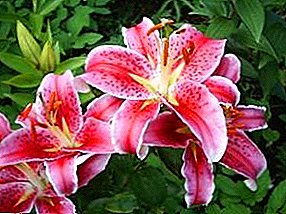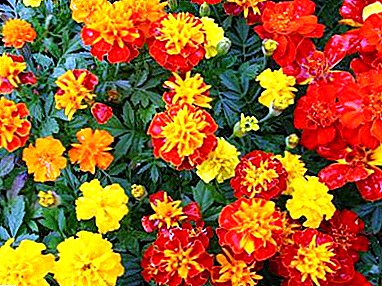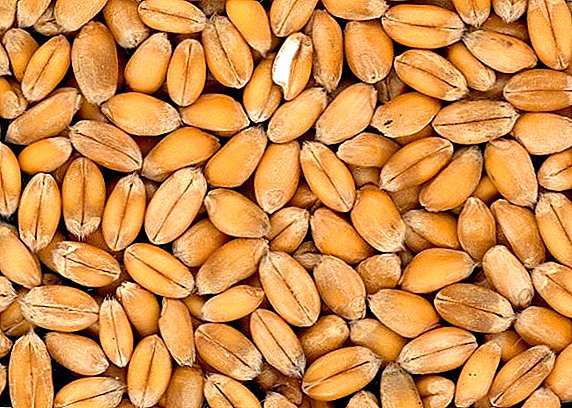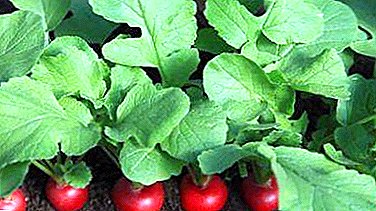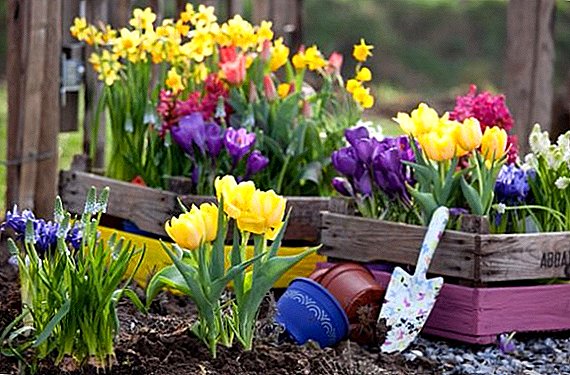 What a dacha without flowers! Spring flowers in the flowerbed have become an indispensable decoration, especially those species that require a minimum of effort to grow and at the same time have an excellent aesthetic appearance. A flower bed of spring flowers can be created from both plants of the same species with different color of inflorescences, and they can be combined from flowers of different species so that they are harmoniously combined with each other in height, spreading and color.
What a dacha without flowers! Spring flowers in the flowerbed have become an indispensable decoration, especially those species that require a minimum of effort to grow and at the same time have an excellent aesthetic appearance. A flower bed of spring flowers can be created from both plants of the same species with different color of inflorescences, and they can be combined from flowers of different species so that they are harmoniously combined with each other in height, spreading and color.
In this article we consider the most popular spring flowers for flower beds.
Tulip
Belongs to the plants of the family Lilein. It is perhaps the most popular perennial decorative spring flower. His homeland is Asia. Today, more than 150 species of it are known, and breeders are working on the development of new ones. Tulip is often called the “king of spring flower beds” for its unique look, special decorative and colorful variety of petals and types of inflorescences, as well as for the fact that these are the first earliest flowers in the country in spring. 
Did you know? Early varieties of tulips - Candy Prince, Cooler Cardinal, Duke van Toll (simple), Abba (the smallest of tulips - up to 10 cm in height), Monte Carlo, Peach Blossom, Beauty of Apeldoorn, Ice Cream (terry).Tulips are suitable for any gardens, flower beds, flower beds. Look great in group compositions, rockeries, alpine slides, bordering borders and flowerpots. They are combined with almost all flowers, but the spring flowerbed, consisting of tulips, daffodils, lilies of the valley, crocuses, looks particularly advantageous. Of particular beauty are the compositions of tulips of different colors and / or shades with lawn grasses and short shrubs. Also, spring beautiful flowers tulips are cut for a vase and often decorate the houses and rooms, they are used to decorate interiors during various events.
Crocus
Crocuses - spring flowers, whose name is also widely known. Crocus is a perennial from the Kusatikov family. It looks a bit like a tulip, only with narrower leaves, much lower in height, as it does not have a ground stem, and the inflorescence blooms directly from the root-tuber. His homeland - the Mediterranean, the Caucasus, the Crimea. Crocuses are also the earliest flowers that appear in spring after winter. They are very decorative, with delicate, varied petals of colors and always rich orange pistil. 
Did you know? The gathered and dried crocus stigmas are called saffron - one of the most expensive spices in the world.Inflorescences by color are lilac, white-lilac, pink-lilac, yellow, pink, orange, white, purple, etc. Today, there are more than 280 varieties of crocus, among which 14 are separate groups of spring flowering. Popular varieties of spring crocuses are Zubflaus, Zwanenburg, Doctor Lotsi, Confidence, Albus Biflorus Veldenia, Alexander, Princess Beatrice, Lady Killer, Blue Pearl, Nanette, Marietta, Albion, Inchantress, Harlem Jem, Pickwick, Negro Bey.
Crocus - an unpretentious flower, well acclimatized and propagated, it is resistant to many garden pests and practically does not get sick. Flowering period - up to 1 month.
Grouse
Or fritillary. The name hazel grouse is a folk one, given because of the variegation of the flower's inflorescences, after the name of the same hazel grouse bird. Grouse is a magnificent decorative tall, perennial bulbous flower of the family Lily. His homeland - Central Asia, the Caucasus. More than 90 types of fritillary are known, among which such beautiful spring varieties are most popular - Imperial, Aurora, Orange Brilliant, Maxim Rubr, Maxim Lutea, Prolifer, Flav.  Hazel grouse stands out among all the flowers with its exoticism - it has a long, powerful stem (90-140 cm) with large, drooping, cup-shaped inflorescences (5-6 pieces), on top of which crown leaves gathered in a bunch. Low lush foliage also surrounds the stem at the root. The flowers are orange, yellow and all shades of red, and inside them are specks and rims along the edge of the petals. Frillation is absolutely unpretentious and looks great in the park, garden, alpine hill, lawn, rock gardens, rockeries. Duration of flowering - 2.5-3 weeks.
Hazel grouse stands out among all the flowers with its exoticism - it has a long, powerful stem (90-140 cm) with large, drooping, cup-shaped inflorescences (5-6 pieces), on top of which crown leaves gathered in a bunch. Low lush foliage also surrounds the stem at the root. The flowers are orange, yellow and all shades of red, and inside them are specks and rims along the edge of the petals. Frillation is absolutely unpretentious and looks great in the park, garden, alpine hill, lawn, rock gardens, rockeries. Duration of flowering - 2.5-3 weeks.
Important! All early flowers are planted in winter - at the end of summer or early autumn. Plants have time to settle down, to overwinter, harden and wake up in early spring and start growing.
Snowdrop
The well-known white spring flowers of snowdrops are a rare endangered species listed in the Red Book. Their name speaks for itself - "appearing from under the snow." Snowdrops are the earliest flowers that are always associated with spring; they have long been a symbol of the onset of warming and the awakening of nature after hibernation. The first flowers of spring, the second name of which are galantus, belong to perennial bulbous herbaceous flowering plants of the Amaryllis family.  More than 16 galantus species are known, growing naturally in Europe, the Caucasus, Asia, and the Crimea. Flowers are low - up to 15-18 cm in height, with delicate tiny drooping inflorescences, milky-white bells and two linear pointed leaves. Galantuses appear in March and bloom for 2-3 weeks. Today you can purchase onion seedlings for the following varieties of snowdrops - Flora Pleno, Voronova galantus, Nivalis galantus, Elvis galantus.
More than 16 galantus species are known, growing naturally in Europe, the Caucasus, Asia, and the Crimea. Flowers are low - up to 15-18 cm in height, with delicate tiny drooping inflorescences, milky-white bells and two linear pointed leaves. Galantuses appear in March and bloom for 2-3 weeks. Today you can purchase onion seedlings for the following varieties of snowdrops - Flora Pleno, Voronova galantus, Nivalis galantus, Elvis galantus.
Did you know? When you plant snowdrops on your land, you will not only receive aesthetic pleasure, admiring the wonderful flowers, but will also contribute to the protection and preservation of the galantus population.Snowdrops are combined with all that is, the early spring garden flowers, without exception, also look great in and of themselves, especially their different varieties, both planted at the same site.
Hyacinth
This is a perennial original bulbous flower belonging to the family Lilein. The flower on the top of a thick, erect, short stem in the form of a cone has many, up to 43-45, adjacent to each other inflorescences, bluebells. The color of their petals is white, purple, blue, pink, yellow, red, orange, lilac, cream, purple. The height of the peduncle is 12-40 cm, the smallest of hyacinths is centella, no more than 12-14 cm high. Centella varieties are Lady Derby, City of Harlem, Ian Boss. Other early flowering varieties of hyacinths are Amethyst, Anna Marie, Ostara, Bismarck, Lord Baflur, Pink Pearl, La Victoire, Delft Blue, Carnegie, Innosans. 
Did you know? Great looks hyacinths of different shades with the same height in the center and more stunted around the edge, planted in a circle or in a round open pot - they have the appearance of a multi-colored curly hats.
Primrose
Primula is a perennial rhizome primrose with a bright three-, four-color color, belonging to the family Primrose and has more than 480 species. It is a flower up to 30 cm in height with a rosette of green, wrinkled, rounded leaves and with a strong peduncle, gathered in inflorescence or single flowers. The color of the petals is blue-yellow, white-yellow, lilac-yellow-white, yellow-pink with white, red-yellow, lemon-yellow-orange, yellow-beige-orange, pink-purple-yellow, purple-orange with yellow and etc.  In the natural environment it grows in Asia, Europe, America, mainly in the mountains or on a flat strip with a humid climate. We primrose bred everywhere, the flower - unpretentious, cold-resistant, with excellent survival rate and rapid reproduction. In addition to its beauty, primrose is good for its early, friendly, abundant and long flowering. It blooms 4-4.5 weeks. Some primroses bloom again and again in the autumn, and the foliage decorativeness in faded flowers lasts all spring and summer. Primula is combined with all primroses, herbs, shrubs and is used to create complex combinatorial compositions on lawns, alpine hills, rabatkah, flowerpots, for edging flowerbeds, borders.
In the natural environment it grows in Asia, Europe, America, mainly in the mountains or on a flat strip with a humid climate. We primrose bred everywhere, the flower - unpretentious, cold-resistant, with excellent survival rate and rapid reproduction. In addition to its beauty, primrose is good for its early, friendly, abundant and long flowering. It blooms 4-4.5 weeks. Some primroses bloom again and again in the autumn, and the foliage decorativeness in faded flowers lasts all spring and summer. Primula is combined with all primroses, herbs, shrubs and is used to create complex combinatorial compositions on lawns, alpine hills, rabatkah, flowerpots, for edging flowerbeds, borders.
And primroses planted together of various varieties and colors in a chaotic manner form a picturesque, colorful, bright carpet that can decorate any corner of the site. The most early-flowering primroses are the large-head primrose, the primrose of Voronov, the spring one, the primrose of Yulia, the stemless, serrated, auricular (ear primrose).
Branka
This little flower with a tender Russian name is properly called a bulbo-diy and belongs to the family of the Lilya. His homeland is Eastern Europe, the Mediterranean. Brancher is a herbaceous flowering plant up to 8 cm tall with a tender, elongated bell-shaped single flower on a bulbous bulb (does not have a stem). Inflorescences are pink or pinkish-purple. Leaves - green with a small blue, linear, gathered in a bunch around the inflorescence.  Branda fully justifies such “tenderness” in its name - small, sweet, with thin translucent petals of delicate shades and at the same time a real primrose - frost-resistant, undemanding and unpretentious in care. Blossoms 3 weeks. Types of branches for our gardens are multi-colored bulbokodiy (it has white buds, and blossoming inflorescence is lilac-pink) and spring bulbokodium. Bulbokodiumy are very decorative, combined with all the early spring vegetation, often used for alpine hills, rock gardens, curb and multi-level garden compositions.
Branda fully justifies such “tenderness” in its name - small, sweet, with thin translucent petals of delicate shades and at the same time a real primrose - frost-resistant, undemanding and unpretentious in care. Blossoms 3 weeks. Types of branches for our gardens are multi-colored bulbokodiy (it has white buds, and blossoming inflorescence is lilac-pink) and spring bulbokodium. Bulbokodiumy are very decorative, combined with all the early spring vegetation, often used for alpine hills, rock gardens, curb and multi-level garden compositions.
Anemone
Or our adapted name anemone. This is a perennial herbaceous tall (up to 75 cm) primrose of the buttercup family. In Russia and the CIS countries, there are more than 45 species of anemone, in total almost 150 of them are known. Under natural conditions, anemone is common in North America, Asia, Eastern and Southern Europe, the Caucasus, the Far East. Anemone has large cup-like flowers, solitary or collected in inflorescence. The leaves themselves are incredibly decorative, carved, openwork, rich green in color (sometimes brown or purple below), gathered at the base into a bush on which flowers appear. Inflorescences of different colors - lilac, blue, blue, white and pink, pink-yellow, lilac with pink, red, white-lilac-purple, red-black-white, etc. By the type of petals are terry and simple. 
Important! The juice of these flowers has a strong skin irritating effect and causes an allergic reaction. Be careful when working in the garden - do not pick flowers or wear gloves.Early species of anemone - Lyutichnaya, Tender, Dubravnaya, Forest. In general, an anemone is a flower with stunning decorativeness, it never bores, and some of its species can bloom all spring and summer until early autumn. Suitable for rock gardens, rocky slides, mixborders.
Errantis
Vesenniki, or Erantes, are spring yellow flowers, whose name literally from Greek means “spring flowers”. Erantis is a perennial grassy undersized (up to 15 cm tall) primrose of the buttercup family. Their homeland - the Far East, Siberia, Asia, are found in the wild in southern and eastern Europe.  The spring has a low stem with a spherical six-petal inflorescence, surrounded like a jab, with not long, strongly or weakly divided leaves at the ends. Over time, the foliage bends in an arc and sags down.
The spring has a low stem with a spherical six-petal inflorescence, surrounded like a jab, with not long, strongly or weakly divided leaves at the ends. Over time, the foliage bends in an arc and sags down.
Did you know? Among the erantids, there are white species - stellate and pinniped and orange-cut erantis - erantis aurantics.Types of the first spring - winter erantis, Tubergen eranti, long-eared eranti, Siberian erantis. Vesenniki are good in themselves - planted in small groups form bright yellow specks that look great and look life-affirming in early spring in any area. Also, they are perfectly combined with all the first spring flowers.
Pushkin
These are beautiful, delicate blue spring flowers of the Lily family. Homeland plants - Small and Middle Asia, the Caucasus. There is a pale blue, almost white form of Pushkinia with thin dark blue veins in the center of the petals - Pushkinia hyacinth, which, along with blue Pushkin pine, is an early spring view.
Did you know? Pushkinia was named after the famous Russian botanist-researcher, Count A. Musin-Pushkin, the discoverer of this flower.The flower on a low stem (up to 16 cm in height) has multiple inflorescences in the form of elongated bells. Blooms profusely and for a long time - up to three weeks. The leaves are long, fleshy, narrow, bright green, collected in the rosette.
 Pushkinia is always elegant and unpretentious, grows quickly, combines with all spring flowers, looks good in complex compositions, shading and creating a contrast with bright and juicy inflorescences of flowers of different types. It also looks great with snowdrops and other white flowers, creating charming landscapes in pastel shades in the garden.
Pushkinia is always elegant and unpretentious, grows quickly, combines with all spring flowers, looks good in complex compositions, shading and creating a contrast with bright and juicy inflorescences of flowers of different types. It also looks great with snowdrops and other white flowers, creating charming landscapes in pastel shades in the garden.In spring, all the flowers listed above bloom first, so they all have a name - primroses. Whatever combinations of primroses you choose, care for them is minimal, and the pleasure in early spring - mid-March to see the blossoming multicolored buds is really great. In addition, many of them smell wonderful, which is also a good reason to plant on your site, if not all of the given types of flowers, then at least some of them - you definitely will not regret!



